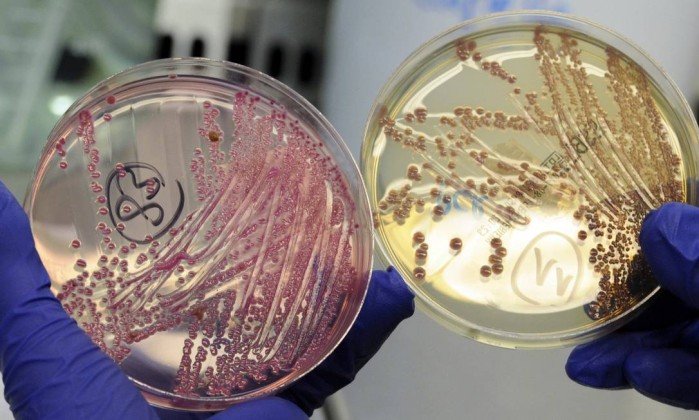 Imagine a scenario where a simple cut on a finger or a simple surgical procedure could leave you fighting for life. Despite appearing to be a description belonging to a distant past, it is a possibility that the scientific community is taking with increasing seriousness.
Imagine a scenario where a simple cut on a finger or a simple surgical procedure could leave you fighting for life. Despite appearing to be a description belonging to a distant past, it is a possibility that the scientific community is taking with increasing seriousness.
Currently around 700 000 deaths/year are registered worldwide due to infections caused by antibiotic resistant bacteria.
And given the marked lack of interest by pharmaceutical companies in researching new antibiotics (essentially for reasons of return on investment), it is estimated that by the year 2050 this number will reach 10 million.
Antibiotic resistance arises when bacteria become able to proliferate in the presence of therapeutic amounts of one or more antibiotics.
This resistance can arise through several mechanisms, such as the acquisition of spontaneous mutations during the selective pressure that is imposed by exposure to antibiotics, and/or acquisition of genetic material that confers this resistance through other bacteria.
The over-prescription of these drugs and the inability to ensure informed use by patients has been and continues to be a catalyst for the emergence of resistance.
For example, a survey carried out by the world health organization (WHO) involving 12 countries, revealed that 64% of approximately 10,000 respondents believe that antibiotics are effective against, for example, common viral infections such as the flu or colds (when they are not).
32% still believe that it is not necessary to respect the medical indications regarding the duration of the treatment.
But the problem is, however, more complex and goes beyond the clinical domain. It is common practice in several countries to administer antibiotics to healthy animals for human consumption in order to accelerate their growth, or as a prophylactic/metaphylactic measure.
This practice has been identified as one of the main causes of resistant infections in animals and humans. In the European Union the use of antibiotics as growth stimulants for animals for human consumption has been banned since 2006.
Only more recently, in 2017, the Food and Drug Administration (FDA) introduced some guidelines in order to limit its use in the United States of America (it is not clear its mandatory character).
Despite these measures, the global consumption of antibiotics for animal use is estimated to increase by 52% by 2030. Currently, this figure is between 100-000 tons/year, with China leading the list of countries with higher levels of use (average 190 mg of antibiotics per kilogram of animal product).
Portugal has much more moderate levels of use, in the order of 90 mg per kilogram of animal product.
According to a report, recently published by the WHO, are the bacteria belonging to the species Acinetobacter baumannii, Pseudomonas aeruginosa, and the family Enterobacteriaceae, which globally have higher rates of resistance to antibiotics (typically carbapenems).
Over the last decade, its spread has reached endemic levels in several regions of the globe, including North America (United States), Latin America (Argentina, Brazil, Colombia), southern and eastern Europe (Greece, Italy, Romania) , Middle East (Israel), and Asia (China).
In response to the increasing ineffectiveness of carbapenems in dealing with infections caused by these bacterial species, there has been a significant increase in the use of another antibiotic – colistin.
One of its particularities is that it belongs to the group of antibiotics called of last resort, used to treat infections that do not respond to other drugs.
But even in the case of this antibiotic, the bad news did not wait. In 2015, the mcr-1 gene that confers resistance to colistin was found in bacteria isolated from swine cattle in China.
Because this gene has been found integrated into what is called a mobile genetic element, it is easier for it to be passed on to other bacteria.
Since then, the mcr-1 gene (and other variants of it) has been found in bacterial isolates all over the world, including in several dozen pigs tested on two producing farms in Portugal. This means, therefore, that the available (and effective) treatment options are decreasing.
The problem of antibiotic resistance is a collective responsibility. Facing up to it implies speeding up the implementation of a political, economic and social agenda free of disguised interests, and which translates into vigorous and coordinated actions at a local, national and international scale.
Some examples of these actions that we can list include: (a) the creation of awareness programs focused on the responsible and optimized use of antibiotics; (b) limiting its use for non-therapeutic purposes; (c) the prohibition of over-the-counter sales (common practice in several countries); (d) the development of faster and more accurate antibiotic susceptibility tests; (e) creation of new economic models that ensure the feasibility of developing new antibiotics and associated technologies; (f) extending the lifetime of patents for priority antibiotics; (g) legislation leading to a reduction in environmental contamination by resistant organisms or antimicrobial residues.
It was in 1945, when Nobel laureate Sir Alexander Fleming issued an alert referring to the antibiotic he had discovered, penicillin: “the public will demand the drug and then an era of abuse will begin”.
More than seventy years have passed. We need to act.
Author Pedro oliveira
© 2018 – Science in the Regional Press / Ciência Viva
 Pedro Oliveira is specialized in the field of Life Sciences and Computer Science, with basic training in Biological Engineering from Instituto Superior Técnico, having passed through University College London during his Masters.
Pedro Oliveira is specialized in the field of Life Sciences and Computer Science, with basic training in Biological Engineering from Instituto Superior Técnico, having passed through University College London during his Masters.
He received his PhD in 2010 at IST in the field of Biotechnology, and was a postdoctoral fellow at the Pasteur Institute in Paris, where he worked in the field of Computational Biology.
He is currently a senior scientist at Mount Sinai School of Medicine in New York.


















Comments